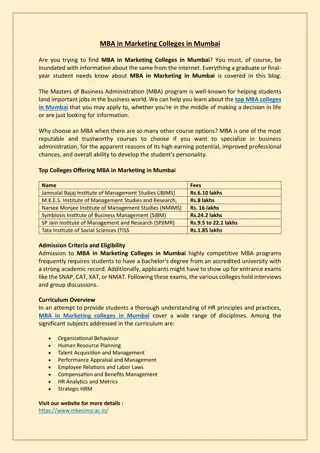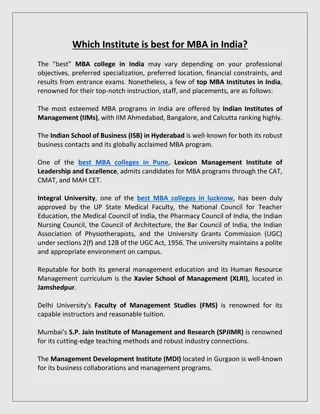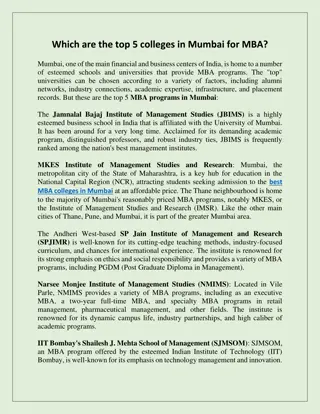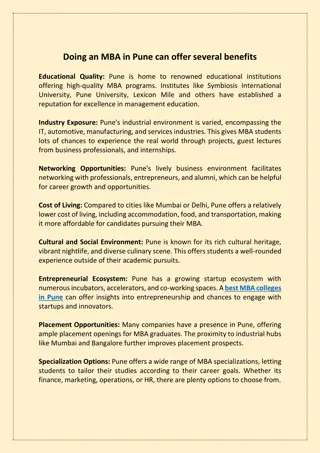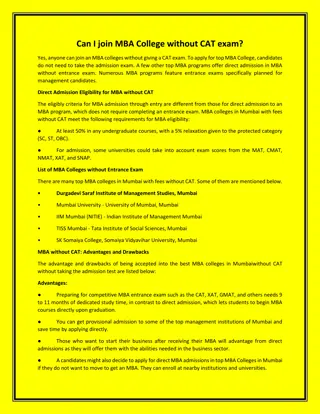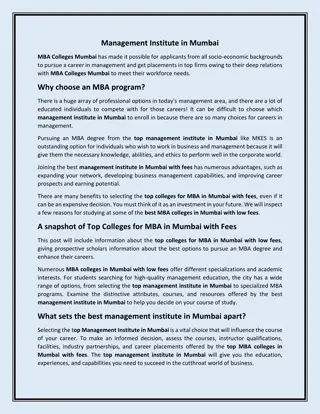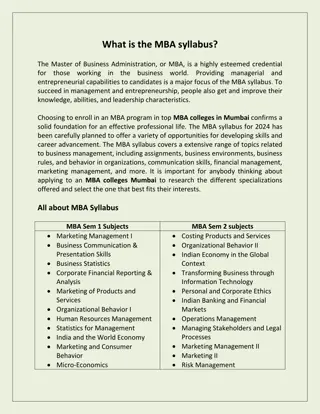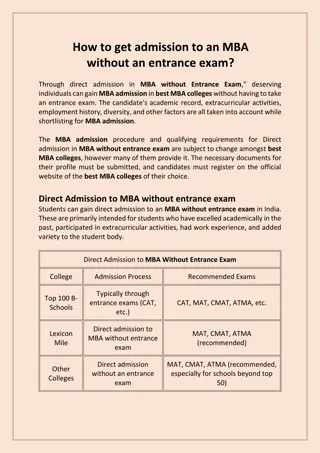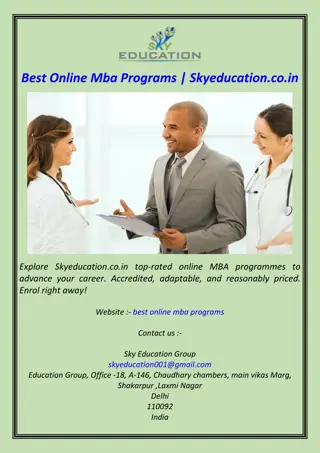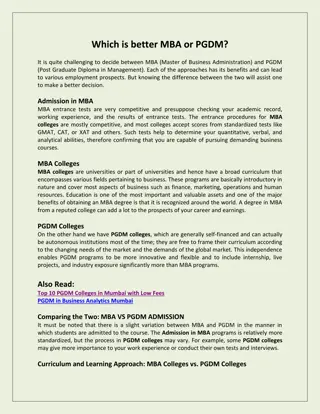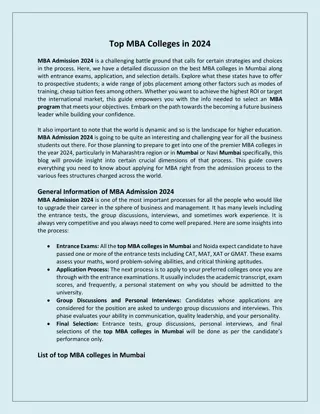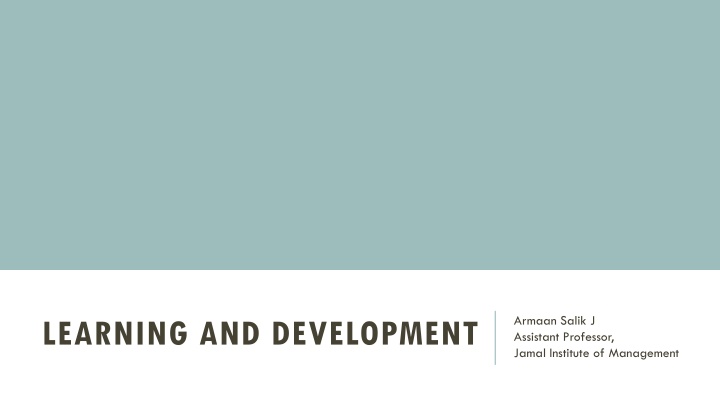
Learning and Development in the Workplace
Explore the definition, purpose, types, and steps in learning and development programs, essential for enhancing employee skills, organizational productivity, and adapting to change.
Download Presentation

Please find below an Image/Link to download the presentation.
The content on the website is provided AS IS for your information and personal use only. It may not be sold, licensed, or shared on other websites without obtaining consent from the author. If you encounter any issues during the download, it is possible that the publisher has removed the file from their server.
You are allowed to download the files provided on this website for personal or commercial use, subject to the condition that they are used lawfully. All files are the property of their respective owners.
The content on the website is provided AS IS for your information and personal use only. It may not be sold, licensed, or shared on other websites without obtaining consent from the author.
E N D
Presentation Transcript
Armaan Salik J Assistant Professor, Jamal Institute of Management LEARNING AND DEVELOPMENT
DEFINITION OF LEARNING AND DEVELOPMENT (L&D) Learning: The process of acquiring knowledge, skills, attitudes, or behaviors to improve performance. Development: A broader concept focused on enhancing an individual s potential for future roles and responsibilities. L&D integrates training and development for employee growth and organizational success.
PURPOSE OF LEARNING AND DEVELOPMENT Enhance Skills and Knowledge: Equip employees with tools for better performance. Improve Organizational Productivity: Align employee capabilities with business goals. Adapt to Change: Help employees navigate technological, economic, and market shifts. Employee Retention: Foster job satisfaction and career progression opportunities.
TYPES OF LEARNING AND DEVELOPMENT On-the-Job Training (OJT) Description: Learning occurs while performing actual job tasks. Examples: Mentoring programs, job shadowing, apprenticeships. Advantages: Practical, cost-effective, and immediately applicable. Challenges: Limited scope for theoretical learning and potential disruption to workflows. Off-the-Job Training Description: Structured training sessions conducted away from the workplace. Examples: Workshops, seminars, classroom training, e-learning modules. Advantages: Offers a distraction-free learning environment and exposure to new perspectives. Challenges: Higher costs and possible disconnect between training and practical application. Skill-Based Training Description: Focused on developing specific skills, either technical or soft skills. Examples: Software training, leadership development, communication workshops. Advantages: Targets skill gaps directly and enhances individual competency. Challenges: Requires proper identification of skill needs and suitable resources.
TYPES OF LEARNING AND DEVELOPMENT Compliance Training Description: Ensures employees are aware of laws, regulations, and organizational policies. Examples: Workplace safety training, data protection, anti-harassment training. Advantages: Reduces legal risks and fosters a safe, ethical workplace. Challenges: Often seen as mandatory and may lack engagement without effective delivery methods. Leadership Development Programs Description: Tailored to prepare employees for leadership roles. Examples: Executive coaching, strategic thinking workshops. Advantages: Strengthens succession planning and cultivates future leaders. Challenges: High costs and longer time horizons for measurable outcomes.
STEPS IN A TRAINING PROGRAM Identify Training Needs Conduct a needs assessment (employee and organizational gaps). Set Training Objectives Define clear, measurable goals. Design the Training Program Develop content, methods, and materials. Implement Training Deliver training through appropriate methods (e.g., classroom, online). Evaluate Effectiveness Assess outcomes and gather feedback.
EVALUATION OF TRAINING PROGRAM Kirkpatrick s Model: Reaction: Participant satisfaction. Learning: Knowledge and skill improvement. Behavior: Application of learning on the job. Results: Impact on organizational goals. Tools for Evaluation: Surveys, tests, performance reviews, and ROI analysis.
CAREER MANAGEMENT Definition: Ongoing process where individuals and organizations jointly manage career planning and progression. Key Components: Self-assessment: Understanding personal strengths, weaknesses, and goals. Goal Setting: Establishing short-term and long-term objectives. Action Planning: Creating steps to achieve career goals. Benefits: Enhances employee satisfaction and organizational loyalty.
CAREER DEVELOPMENT Definition: Activities and initiatives aimed at fostering personal and professional growth. Activities Include: Coaching and mentoring. Training and education. Succession planning. Importance: Aligns individual ambitions with organizational objectives. Prepares employees for leadership roles and future challenges.
CONCLUSION Learning and Development drive organizational success and individual growth. Effective training programs and career development initiatives enhance employee engagement and retention. Continuous evaluation ensures alignment with changing business needs.


